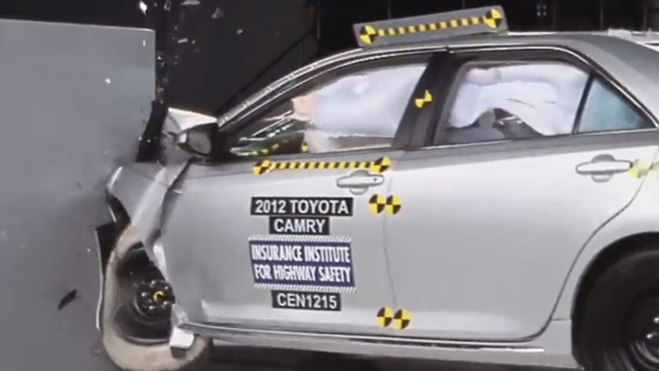Thirty pages deep in a beaten-up vehicle’s owner’s manual, there’s a curious warning about aging airbags.
It reads: “To ensure long-term functioning, the system must be inspected 10 years after the date of manufacture as noted on the certification label.”
In this case, the manual belongs to a 15-year-old Nissan Altima. Similar warnings recommending airbag inspections appear in the owner’s manuals of dozens of older-model cars. A small handful even recommend replacing airbags after a decade.
Given that most car owners don’t make a habit of scrutinizing their owner’s manuals, especially after a decade or more of ownership, these airbag warnings can be overlooked. But they’re important, and following the advisories could prevent these life-saving devices from malfunctioning in an accident.
More cars than ever might be in need of such inspections. The average age of a car on the road in the U.S. today is 11.2 years, the oldest average age of the American fleet ever, according to Polk, an automotive forecasting company.
Replacing an airbag is, at a cost of at least $1,000 per frontal airbag, almost an unheard of practice, especially considering older cars have diminished value. For consumers who are concerned, an inspection may at least give them more information on the condition of their airbag system.
“Some of the manufacturers talk about replacing them from the mid-90s or older,” said Mike Calkins, manager of technical service for AAA’s automotive engineering department. “If people are concerned, they should talk to theirdealer.”
When the warnings were first written, manufacturers weren’t sure how their airbags would age. Components can degrade over time. Moisture can penetrate sealed components and affect the powder used to ignite the explosions that fill airbags with gas. From start to finish, an airbag deployment should take 30 to 40 milliseconds, but compromised powder can delay — or prevent — that rapid response.
Even in an inspection, it can be almost impossible for mechanics to determine how an airbag will perform. Testing it would render it useless. A more common problem that occurs over time — one mechanics can both test for and fix — is that electrical wires become corroded.
“Most of the problems that have cropped up are dirty connections and not in the airbag itself,” Caulkins said. “And if they do get corroded, that should turn your airbag light on, and you take in in, the connections are cleaned and everything is fine.”
Airbags were first introduced to cars in the 1970s. No one was quite sure how they would age. In 1992, theInsurance Institute for Highway Safety conducted one of the first tests of the technology, driving a rusty 1972Chevrolet Impala into a barrier at 25 miles per hour. The car had no working clock, no working radio and more than 100,000 miles on its odometer. It was one of the first 1,000 cars equipped with an airbag that General Motors had produced.
The airbags worked.
They “might have been the most reliable part of this old car,” said Brian O’Neill, who was then president of IIHS.
Airbags evolved over time, as manufacturers learned children and small-statured adults could be injured or killed by the high intensity of airbag inflation. More than 290 people, including 191 children, were killed by airbags between 1990 and 2008, according to the National Highway Traffic Safety Administration. By comparison, however, NHTSA says frontal airbags saved 25,782 lives between 1987 and 2008.
Curiously, the safety evolution of airbags may have changed in 2008. That’s when NHTSA mandated changes to airbags that made manufacturers start using Certified as Advanced and Compliant (CAC) airbags that contained features that measure occupant size and seat position, which enabled airbag systems to tailor impact severity and deployment strength to changing situations.
A study released by the IIHS this month suggests these more advanced airbags may have mixed results. Drivers using a seatbelt are actually more likely to die with the advanced technology. IIHS researchers found a 2 percent increase in death for belted drivers compared to drivers involved in accidents using the previous generation airbags. But the new CAC airbags have resulted in a 26 percent decrease in death for drivers who don’t use their seatbelts.
“To some extent, it worked, but I don’t think anybody envisioned a tradeoff,” said Joe Nolan, vice president of research at IIHS. “We’re continuing to study this, because the belted population makes up the majority of drivers in this country.”
Neither IIHS nor AAA recommend that owners replace undeployed airbags on older-model cars. A bigger concern, they say, is if airbags deploy in a crash, they should be replaced with parts directly from the manufacturer, and not with a used airbag.
“We recommend they get the OEM equipment when possible,” Nolan said. “Technically, there’s nothing wrong with a used airbag as long as it’s retrieved properly. Theoretically, there should be no problem using it. The trouble is there’s no telltale sign to determine whether damage might have occurred.”



